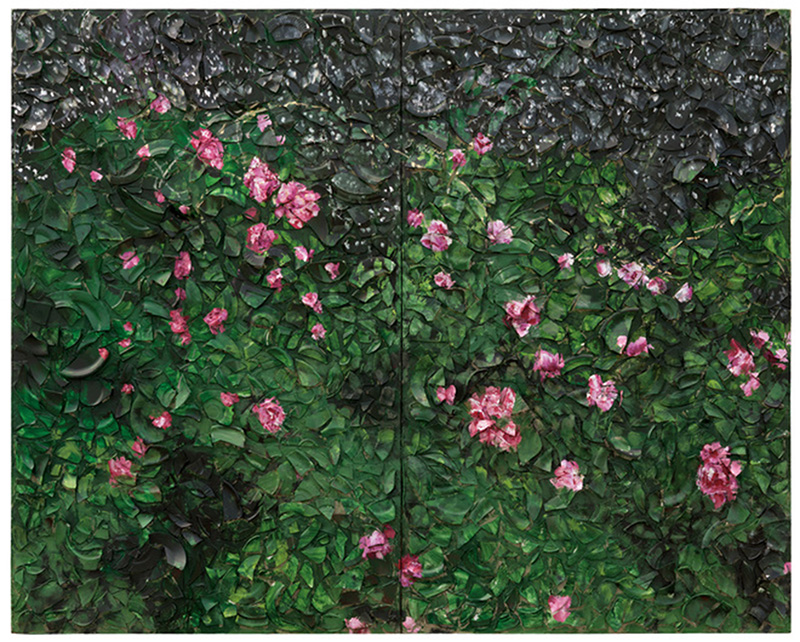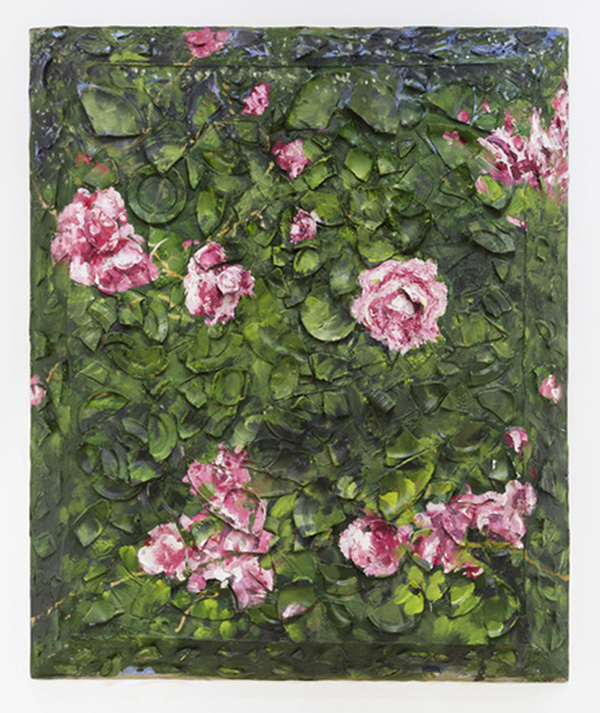ART-PREVIEW:Julian Schnabel-New Plate Paintings
 Julian Schnabel played a critical role in the emergence of Neo-Expressionist painting in the U.S.A. After two decades dominated by the aesthetics of Minimalist and Conceptual Art, Schnabel’s heroic scale, gestural brushstrokes, and figurative subject matter marked a radical shift in painting. Schnabel is best known for his “Plate Paintings” comprised of broken plates and pottery pieces glued to large canvases and then painted.
Julian Schnabel played a critical role in the emergence of Neo-Expressionist painting in the U.S.A. After two decades dominated by the aesthetics of Minimalist and Conceptual Art, Schnabel’s heroic scale, gestural brushstrokes, and figurative subject matter marked a radical shift in painting. Schnabel is best known for his “Plate Paintings” comprised of broken plates and pottery pieces glued to large canvases and then painted.
By Dimitris Lempesis
Photo: Pace Gallery Archive
In his solo exhibition “New Plate Paintings” at Pace Gallery in New York, Julian Schnabel presents new works inspired by the roses growing in the cemetery near Van Gogh’s grave in Auvers-sur-Oise, France. Julian Schnabel came to prominence with his signature plate paintings, such as “Spain” (1986). The surface of this work is strewn with shards of broken crockery and covered with thick layers of pigment. The series, notable for its large scale, flamboyant texture, and distorted subjects, was conceived in the ‘70s after Schnabel visited Barcelona, where he saw mosaic benches by Catalan architect Antonio Gaudí. Transforming the traditional surface of the mosaic, the broken plates and cups project from the canvas like jagged, sculptural brushstrokes. The swirling colors of this series often depict legendary figures, and the disembodied head in the center of Spain is an important and recurrent image in the artist’s work. In 1987 Schnabel began making paintings in which written words and proper names serve as subject matter. The early works in this series marked a change in imagery from one of excess to one of deliberate austerity and from pictorial narrative to oblique, linguistic reference. In 1987, Schnabel published “CVJ: Nicknames of Maître D’s and Other Experts from Life”, which included an excerpt from his notes from 1978 where he reflected on his thought process for his first plate paintings: “The plates seemed to have a sound, the sound of every violent human tragedy, an anthropomorphic sense of things being smeared and thrown…I wanted to make something that was exploding as much as I wanted to make something that was cohesive”. The artist continues to fragment the plates, but rather than using them to disrupt the picture plane, he incorporates each piece to create a homogeneous surface that recalls the rhythm of nature. In the ‘90s, Schnabel began to create full-length feature films, which he considered a natural extension of his simultaneous work in painting. His first film, “Basquiat” (1996), chronicled the tragically brief career and life of New York-based painter Jean-Michel Basquiat. Schnabel’s next film, “Before Night Falls” (2000), a biography of Cuban poet Reinaldo Arenas, won the Grand Jury Prize at the Venice Film Festival. His most recent film “The Diving Bell and the Butterfly” (2007), for which Schnabel was awarded the Best Director Prize at the Cannes Film Festival and the Golden Globes, was inspired by the memoirs written by French Elle’s editor in chief Jean-Dominique Bauby after he was diagnosed with Locked-in Syndrome, which resulted from a sudden stroke.
Info: pace Gallery, 510 West 25th Street, New York, Duration: 24/2-25/3/17, Days & Hours: Tue-Sat 10:00-18:00, www.pacegallery.com

